WHY COOKING FISH IN ALUMINUM FOIL IS A RECIPE FOR DISASTER?
🤔
"A moment of convenience is not worth the risk of damaging your microwave or causing a fire."
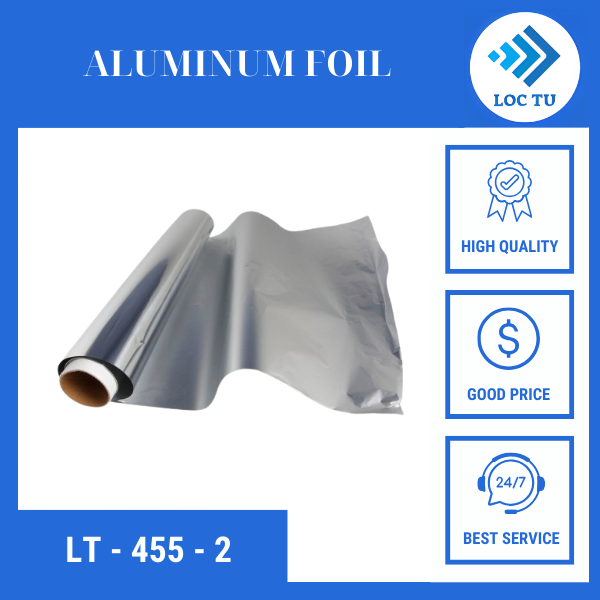
1. The Science Behind the Heat: How Microwaves Cook Food
1.1. Microwave Energy - The Invisible Cook
⚡ Generation: Microwaves are produced by a component called a magnetron within the oven.🎯 Interaction with Water: These energy waves are specifically tuned to interact with water molecules, as well as fats and sugars, in food.🔄 Molecular Vibration: When microwave energy penetrates food, it causes these molecules to vibrate at incredibly high frequencies.🔥 Heat Production: This rapid vibration creates friction at a molecular level, which generates heat throughout the food.
"Microwave energy directly targets water molecules, making them vibrate and generate heat."
Term-Definition Pair: Dielectric Heating: The process by which microwave ovens heat food, based on the vibration of polar molecules (like water) in a rapidly alternating electromagnetic field.
2. Aluminum Foil: A Material That "Fights" Microwaves
2.1. Properties of Aluminum Metal
✨ Excellent Electrical Conductor: Aluminum allows electricity to flow through it very easily.🛡️ Highly Reflective: Aluminum surfaces strongly reflect electromagnetic radiation, including the microwaves generated by the oven. They do not absorb this energy like food does.📏 Thin & Malleable: Aluminum foil is extremely thin and easily shaped, which also contributes to its reactive behavior in a microwave. Its edges can be sharp or crimped.
"Aluminum is a shield against microwaves; it bounces them back."
Term-Definition Pair: Electromagnetic Shielding: The act of blocking electromagnetic fields. Conductive materials like aluminum provide shielding by reflecting or absorbing electromagnetic waves.
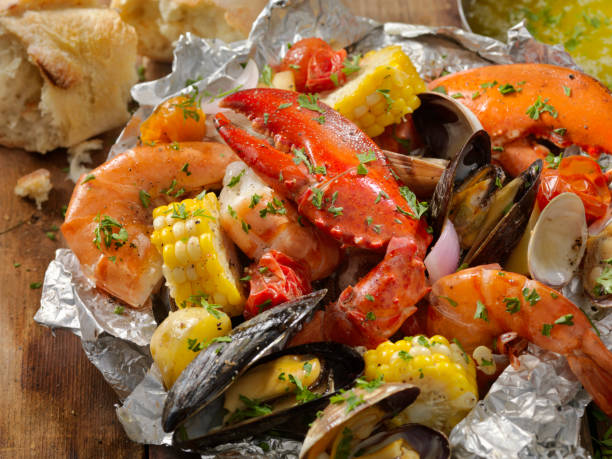
3. The Hazardous Meeting: Metal Reacts Violently with Microwaves
3.1. Induced Electric Currents
⚡ Energy Induces Current: When powerful microwave energy strikes a metal surface (like aluminum foil), it induces an electrical current on the surface of the metal. This isn't the current from your wall outlet; it's generated by the microwave field itself.
3.2. Charge Buildup and "Arcing"
💥 Concentration Points: The induced currents tend to concentrate at points where the metal's shape is irregular – sharp edges, corners, wrinkles, or crimped seams common on aluminum foil and trays.⚡ Electrical Discharge (Arcing): This concentration leads to a rapid buildup of electrical charge. When the charge becomes too high, it can discharge by "jumping" through the air to another point on the metal, another metal object, or even the inside wall of the microwave oven. This electrical discharge is called arcing, seen as sparks or flashes.
"Microwaves force electricity onto the surface of aluminum, causing sparks."
Term-Definition Pair: Arcing (or Electrical Arcing): A luminous electrical discharge across a gap, characterized by sparking. In a microwave, this is caused by concentrated induced currents on metal objects.
4. The Domino Effect: Risks Stemming from Arcing
4.1. Immediate Damage and Fire Risk
🔥 Fire Ignition: The intense heat of arcing can ignite flammable materials inside the microwave. This includes paper packaging, plastic containers, residual food debris, or built-up grease. A fire can quickly spread within the oven cavity and potentially to surrounding areas.💥 Appliance Damage: Repeated arcing, or even a single severe arcing event, can cause irreversible damage to the microwave's internal components, most critically the magnetron that generates the microwaves. This often renders the appliance unusable.
4.2. Impact on Food and Safety
🌡️ Uneven Heating: As microwaves are reflected and used to generate sparks, they are not penetrating the food effectively. This leads to significantly uneven heating, with some parts becoming very hot while others remain cool.🦠 Food Safety Hazards: Uneven heating can leave cool spots in the food where harmful bacteria can survive and multiply, increasing the risk of foodborne illness.🚫 Inefficient Cooking: The energy is wasted on arcing rather than cooking the food. The meal takes longer, heats poorly, and the desired result is not achieved.
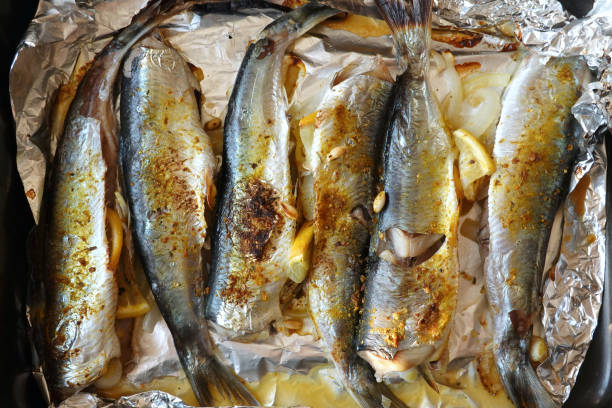
"Arcing is a warning sign of potential fire and irreversible damage."
5. Comparing Heating Methods: Why Ovens are Safe for Foil
5.1. Conventional Oven Heating
🔥 Uses Thermal Energy: Ovens heat using hot air circulation (convection) and radiant heat from heating elements. This is direct thermal energy.✅ Foil Manages Heat: Aluminum foil handles high temperatures well (below its melting point). It conducts this thermal heat to the food and can reflect radiant heat. It does NOT react electrically with this type of energy.👍 Safe Application: Wrapping, covering, and lining pans with foil are safe and effective techniques in a conventional oven.
5.2. Microwave Oven Heating
⚡ Uses Electromagnetic Energy: Microwaves use a specific frequency of electromagnetic waves.🚫 Foil Reacts Electrically: Aluminum foil's electrical conductivity and reflectivity cause it to react with these waves, leading to induced currents and arcing.⚠️ Dangerous Application: Putting standard aluminum foil or containers in a microwave is unsafe due to the risk of arcing.
"Thermal heat is managed by aluminum. Electromagnetic waves are disrupted by it."
6. Addressing "Microwave-Safe" Aluminum Packaging
6.1. What Makes Some Aluminum "Microwave-Safe"?
🔬 Specific Design: These containers are engineered with precise shapes and edge finishes that minimize the concentration of induced currents.🛡️ Special Coatings: Often, they have thin layers or coatings of other materials (like polymers) that insulate or alter the way the aluminum interacts with microwaves.✅ Rigorous Testing: Products labeled "Microwave Safe" have undergone specific testing to ensure they can withstand microwave energy without arcing under normal conditions.
"Only aluminum packaging explicitly designed and labeled for microwave use is safe."
(Standard aluminum foil rolls and typical aluminum takeout containers or khay giấy bạc đựng hải sản are generally NOT microwave-safe unless they bear specific labeling).
6.2. How to Identify Microwave-Safe Packaging
🔍 Look for Clear Labeling: The packaging MUST explicitly state "Microwave Safe" or show a microwave-safe symbol.🚫 Never Assume: Do not guess based on appearance or thickness. If there's no clear "Microwave Safe" label from a reputable manufacturer, do not put it in the microwave.
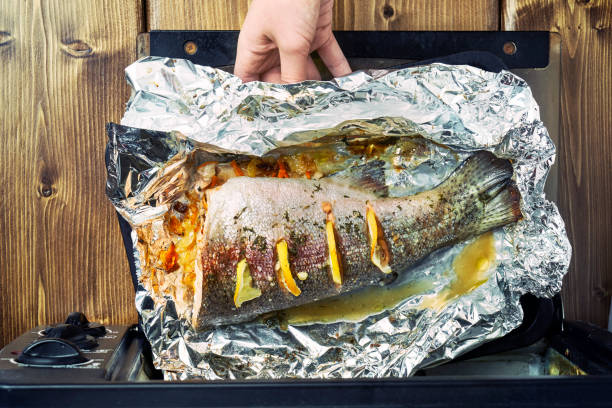
7. Safe & Effective Alternatives for Reheating Fish
7.1. The Golden Rule for Safety
🚫 Do NOT Microwave in Aluminum: This is the primary rule. Remove the fish from the aluminum container or foil wrapping.
7.2. Using Microwave-Safe Vessels
✅ Select a Safe Dish: Choose a container made of glass, ceramic, or microwave-safe plastic. Look for symbols indicating microwave suitability (Often on the bottom).🔪 Transfer the Fish: Carefully place the fish into the microwave-safe dish. Include any sauces or vegetables.뚜껑 Cover for Moisture: Cover the dish with a microwave-safe lid, microwave-safe plastic wrap (vented with a small hole), or a damp paper towel. This helps keep the fish moist and prevents splatter.⏱️ Reheat Gently: Microwave on a medium power setting for shorter intervals, checking frequently. Overheating fish in a microwave can make it rubbery.🔬 Check Doneness/Heat: Ensure the fish is heated through to your desired temperature. Use a food thermometer if necessary for larger pieces, aiming for 74°C (165°F) if reheating leftovers originally cooked to that temp, or simply heated through. (Remember checking internal temperature for safety, as discussed withgà nướng giấy bạc bao lâu chín ).
"Transferring fish takes seconds. It prevents minutes of disaster."
8. Misconceptions: Debunking Common Myths
8.1. Debunking Common Myths
🚫 Myth 1: "A small piece of foil is okay." ⚡ Reality: False. Even small pieces of foil, particularly if crumpled or near other metal, can cause arcing and damage.
🚫 Myth 2: "It's okay if the foil isn't touching the sides." ⚡ Reality: False. Arcing is caused by the interaction of the foil with microwaveswithin the cavity , not just contact with the walls. While proximity to metal can increase risk, the primary issue is the reaction of the foil itself.
🚫 Myth 3: "Aluminum trays are thick, so they're probably safe." ⚡ Reality: False. Thickness does not determine microwave safety. It's about the material's reaction to microwaves and the presence of specific safety features or coatings. Standard aluminum trays are not microwave-safe.
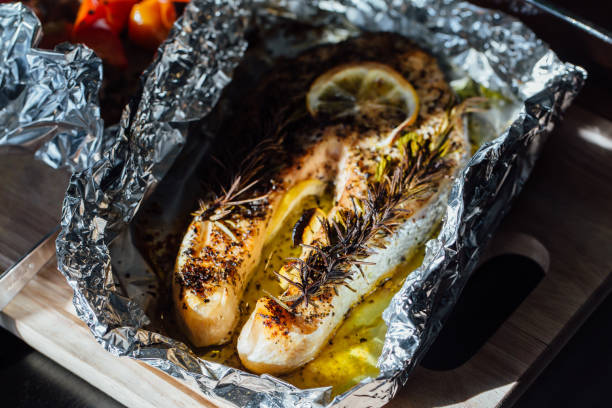
"Don't fall for myths. Follow the safety guidelines."
9. Identifying Microwave-Safe Packaging: Symbols and Materials
9.1. Safe Materials for Microwaving
✅ Glass: Most glass dishes are microwave-safe.✅ Ceramics: Most ceramic dishes (without metallic glazes or decoration) are safe.✅ Microwave-Safe Plastics: Look for plastic containers with the specific microwave-safe symbol. Polypropylene (PP) is a common microwave-safe plastic.✅ Paper: Paper plates, towels, and parchment paper are generally safe (avoid those with metal trim or excessive grease).
9.2. Symbols to Look For
⚡️ Microwave Safe Symbol: Often depicts a microwave oven with wavy lines inside, or sometimes just wavy lines. If it has a cross through it, it means NOT microwave safe.♻️ Material Type Symbol: Recycling symbols with numbers (e.g., triangle with '5' and 'PP' for Polypropylene) can help identify plastic types; check online resources for microwave compatibility of specific plastic typesif there is no microwave-safe symbol.
"Look for the microwave-safe symbol. Or use trusted materials like glass and ceramic."
10. The Science of Damage: How Arcing Destroys Your Microwave
10.1. Impact on the Magnetron
💥 Source of Microwaves: The magnetron is the core component. It generates the microwave energy.⚡ Energy Feedback: When metal (like aluminum foil) is in the cavity, it reflects the microwaves directly back to the magnetron. This feedback of energy is harmful.🔥 Overload and Burnout: The reflected energy can overload the magnetron. Arcing further intensifies electrical stress. This can cause the magnetron to overheat, burn out, or become permanently damaged.
10.2. Damage to the Oven Cavity and Components
⚡ Arcing Marks: Arcing can leave scorch marks or even pit the metal walls inside the microwave cavity.💡 Damage to Waveguide/Stirrer: The waveguide directs microwaves into the cavity. The stirrer helps distribute them. Arcing can damage these components, leading to uneven heating or complete failure.
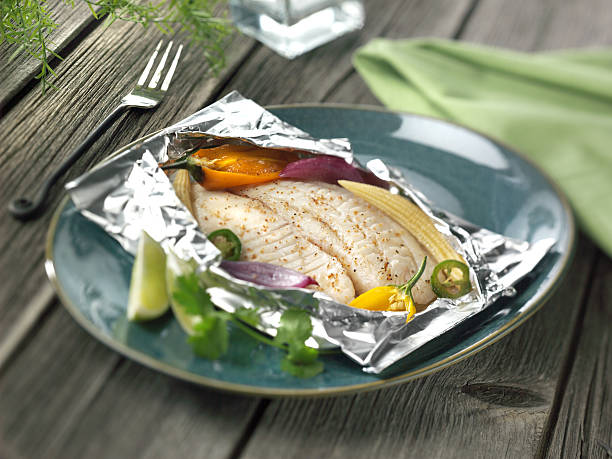
"Reflected energy and arcing are like a punch to the heart of the microwave."
11. FAQ: Clarifying Questions About Aluminum & Microwaves
11.1. Safety Specifics
11.2. Alternatives
Indentation: Always ensure any covering used in the microwave is also microwave-safe.
CONCLUSION: Microwave Safety - The Aluminum Foil Rule
Safety Essentials: Aluminum & Microwaves: ⚡️ Aluminum causes arcing in microwaves.🔥 Arcing leads to fire & oven damage .🚫 Standard foil & containers are NOT microwave-safe.✅ Use microwave-safe dishes (glass, ceramic, tested plastic).🔬 Check for "Microwave Safe" labels on packaging.👍 Aluminum foil is safe and useful in conventional ovens.
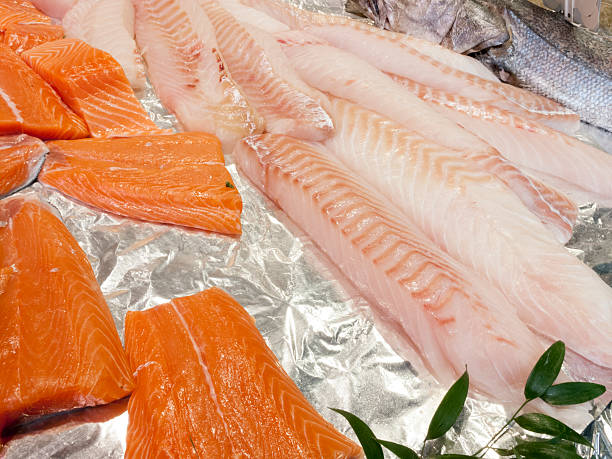
Loc Tu: Pioneering Excellence in Premium Aluminum Packaging Solutions
Why Choose Loc Tu:
✅ Assured Quality & Safety: Crafted from premium, food-grade aluminum, free from harmful impurities, meeting international safety benchmarks.
🔥 Optimal Thermal Properties: Ensures even cooking and excellent heat retention, preserving food temperature and taste effectively.
💪 Durable & Convenient Design: Engineered to resist leaks and dents, providing reliable performance for baking, storage, and transport.
🔄 Versatile Solutions: Our extensive range caters to various applications – from baking and steaming to storing fresh food and takeaway meals.
🌱 Eco-Conscious Packaging: Made from 100% recyclable aluminum, supporting sustainability and reducing plastic waste.
🎯 Brand Enhancement: Optional custom printing available to personalize products and boost your brand visibility.
🚚 Reliable Supply & Delivery: Capable of handling large orders with dependable, on-schedule nationwide shipping.
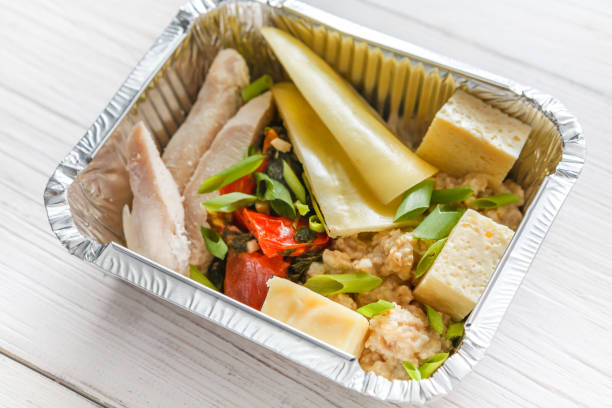
Your Trusted Partner in Food Packaging 📞
📌 LOC TU MANUFACTURING & TRADING CO., LTD
📌 Website: ALUMINUMFOILVN
📌 HOTLINE/ZALO: +84.969.787.309
📌 Facebook: Khay nhom thuc pham
📌 Youtube: Khay nhom thuc pham Loc Tu
📌 Tik Tok: Khay nhom Loc Tu
📌 Shopee: Khay nhom thuc pham Loc Tu
📌 Telegram: Khay Nhom Thuc Pham Loc Tu
📌 Whatsapp: +84.969.787.309
📌 Branch 1 (Hanoi): No. 1 Pham Tu, Beasky Building, Dai Kim Ward, Hoang Mai District, Hanoi
📌 Branch 2 (Binh Duong): No. 68, DX 051 Street, Group 17, Quarter 4, Phu My Ward, Thu Dau Mot City, Binh Duong Province
📞 Contact us today for expert consultation and the best pricing on premium aluminum trays, foil, and food packaging solutions! 🚀
LOC TU PRODUCTION AND TRADING COMPANY LIMITED
Branch 1 (Binh Duong): No. 68, DX 051 Street, Group 17, Quarter 4, Phu My Ward, Thu Dau Mot City.
Branch 2 (Hanoi): No. 1 Pham Tu, Beasky Building, Dai Kim Ward, Hoang Mai District.
Hotline/Zalo: +84.969787309
Website: Khaynhomthucpham.com
Email: [email protected]